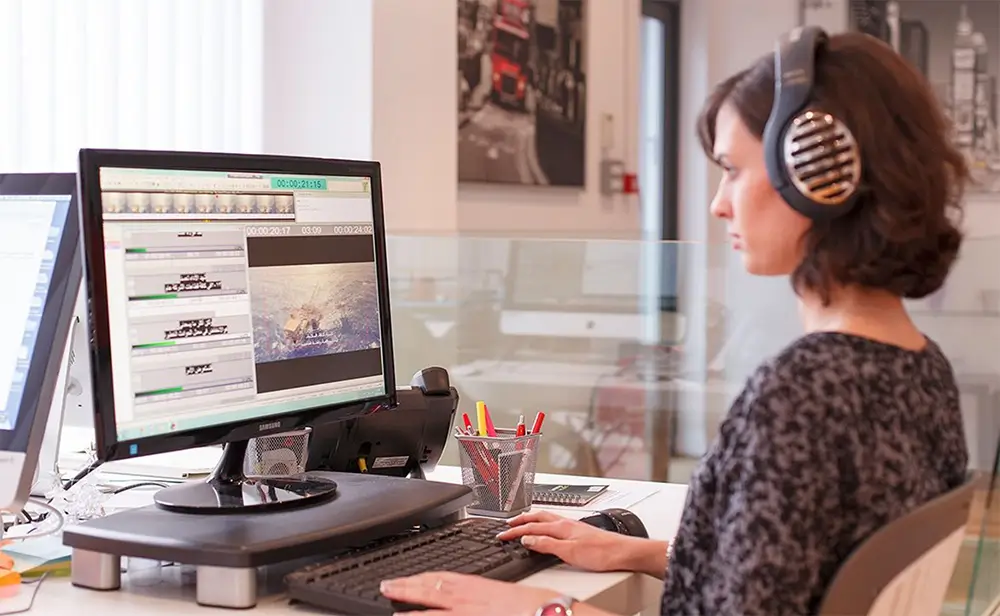In today’s global business environment, having a diverse and international workforce is more common than ever. As companies expand across borders, employee training becomes a vital component of business success. However, with language barriers and cultural differences, delivering consistent training across various regions can be challenging. This is where video translation comes into play. By translating training videos, businesses can provide clear and accessible content to employees in multiple languages, ensuring that everyone receives the same information.
In this article, we’ll explore how businesses can effectively use video translation for employee training and why it’s becoming a critical tool for modern organizations.
Why Video Translation Matters in Employee Training?
Employee training videos are one of the most efficient ways to provide instruction, whether for onboarding, compliance, or skill development. Video content allows for a more engaging and visual learning experience compared to traditional text-based materials. However, when businesses operate in different countries, language barriers can prevent employees from fully benefiting from the content.
Video translation solves this issue by converting training videos into various languages, allowing businesses to maintain consistency while making training accessible to employees worldwide. A free video translator is an excellent resource for organizations looking to translate their training materials without significant costs. These tools ensure that the video content can be adapted and understood by employees, no matter their location.
How AI Video Translation Tools Enhance Employee Training
AI-powered video translation tools have made it easier and faster to translate training videos, eliminating the need for manual translations. These tools use artificial intelligence to automatically translate the spoken content in the video and even adjust the subtitles or captions accordingly.
One of the major advantages of using AI for video translation is the speed and accuracy it offers. AI tools can detect language nuances, accents, and industry-specific terminology, ensuring that the translated content is accurate and relevant. Additionally, AI tools can synchronize subtitles and audio with the video, making the training material more engaging and easier to follow.
Steps to Implement Video Translation for Employee Training
If you’re looking to use video translation for your employee training, here’s how to get started:
1. Choose a Reliable Video Translator Tool
Start by selecting a free video translator or a premium AI tool, depending on your business needs. Look for platforms that offer a wide range of languages and support both audio and subtitle translation. This will give you flexibility in creating training videos tailored to your diverse workforce.
2. Translate Existing Training Videos
Once you’ve chosen your tool, begin by translating your existing training videos. AI-powered video translators can automatically generate subtitles and even offer voiceover options in different languages.
3. Ensure Consistency Across Languages
Maintaining consistency across different languages is crucial in employee training. AI translation tools can help ensure that your translated videos convey the same message across all languages. This is especially important for compliance training, safety protocols, and corporate policies, where miscommunication can lead to costly mistakes.
4. Test for Accuracy
After translating your training videos, it’s essential to test the accuracy of the translations. You can have native speakers or language experts review the content to ensure that the meaning has been preserved and that there are no discrepancies between the original and translated versions.
5. Deliver Multilingual Training Videos
Once you’re confident that the translations are accurate, it’s time to roll out your multilingual training videos to your employees. Depending on your platform, you can allow employees to select their preferred language when accessing the training videos, ensuring that everyone can fully understand the material.
Benefits of Video Translation in Employee Training
Implementing video translation in employee training offers several advantages:
Improves Accessibility: Employees across different regions can access training content in their native language, enhancing understanding and engagement.
Ensures Compliance: Consistent training across languages ensures that all employees are aligned with company policies and regulatory requirements.
Cost-Efficient: Using AI-powered video translation tools reduces the need for manual translations, saving time and money for businesses.
Faster Training Implementation: AI video translation tools allow businesses to roll out multilingual training videos quickly, keeping up with the fast-paced demands of global organizations.
Future of Video Translation in Employee Training
As artificial intelligence continues to advance, we can expect even more sophisticated video translation tools. AI is revolutionizing how businesses create and share content, with AI video generation now enabling companies to produce multilingual videos without the need for extensive resources.
In the near future, tools like the AI video maker app will not only translate training videos but also generate entirely new video content based on text prompts, making the process of training creation even more efficient. These innovations will allow businesses to further optimize their training programs, providing personalized and localized learning experiences for employees around the world.
Conclusion
Video translation is becoming an essential tool for businesses with a global presence. By leveraging AI-powered tools, companies can efficiently translate training videos into multiple languages, ensuring that all employees, regardless of location, receive consistent and accurate training. Whether you’re using a free video translator or advanced AI tools, integrating video translation into your employee training program will enhance communication, engagement, and productivity in your workforce.
Incorporating video translation into your training strategy is not just a trend but a necessity in today’s global business landscape. As AI continues to evolve, businesses can look forward to more innovative solutions that make video content more accessible and impactful for all.






